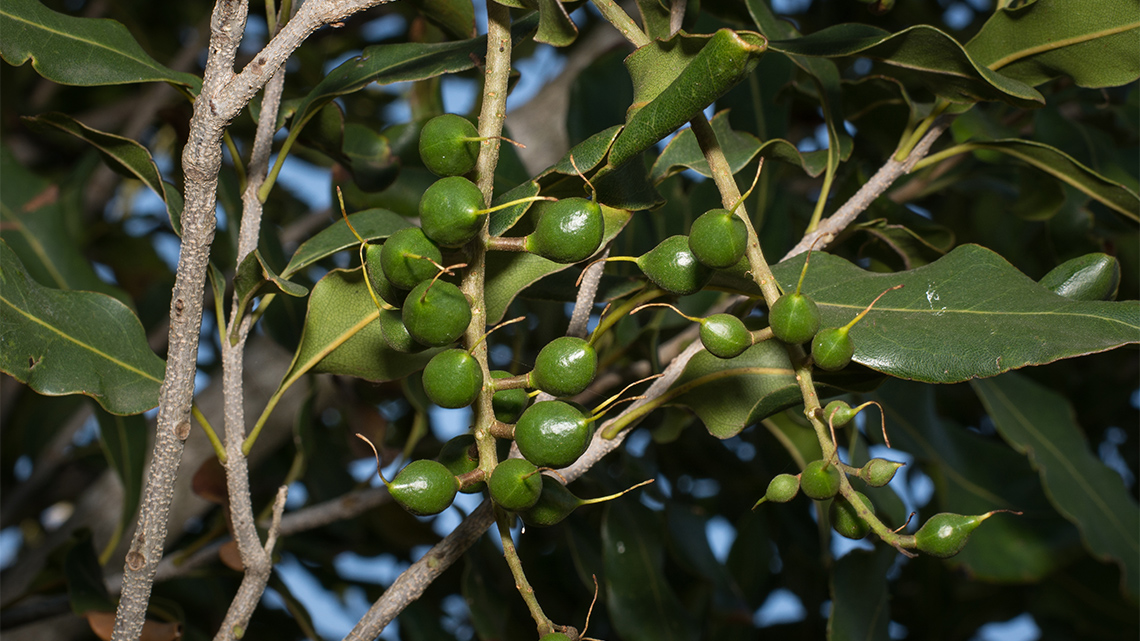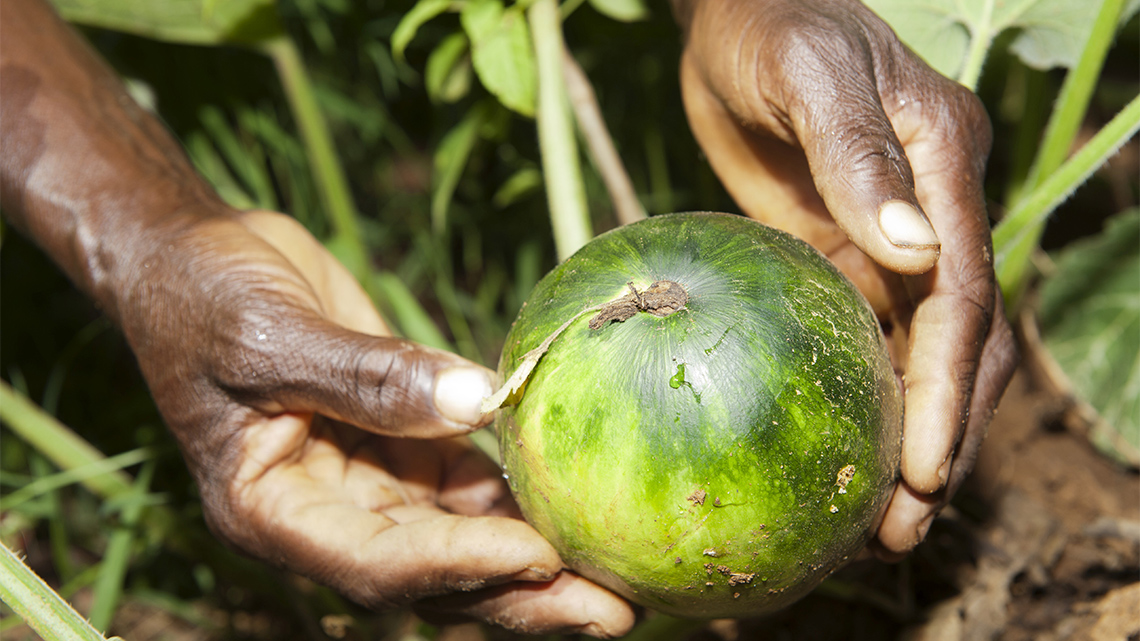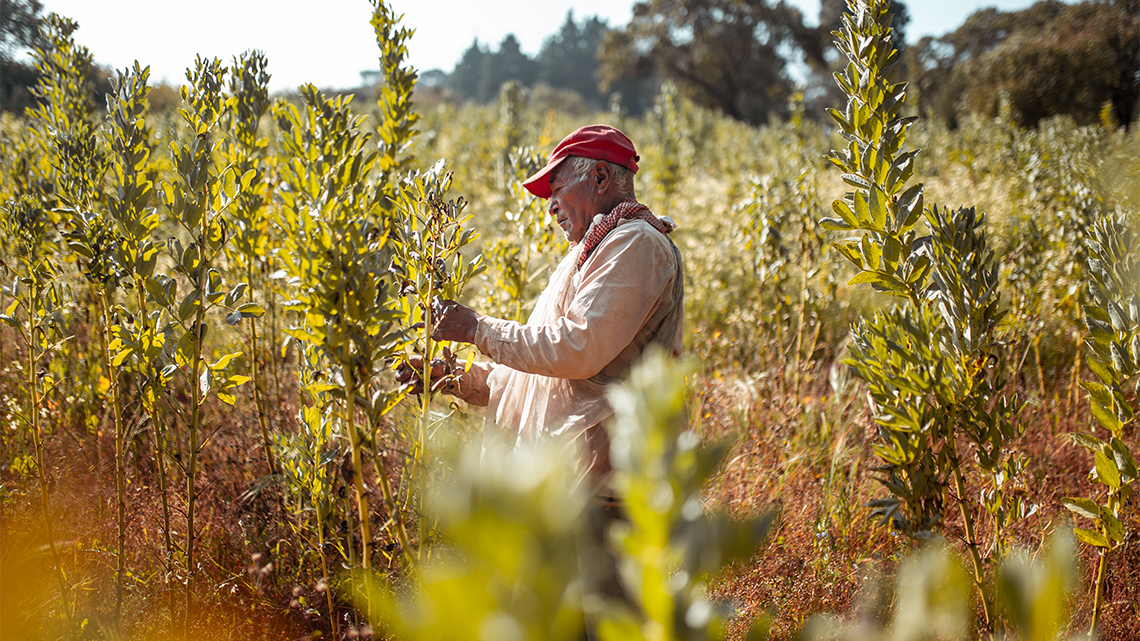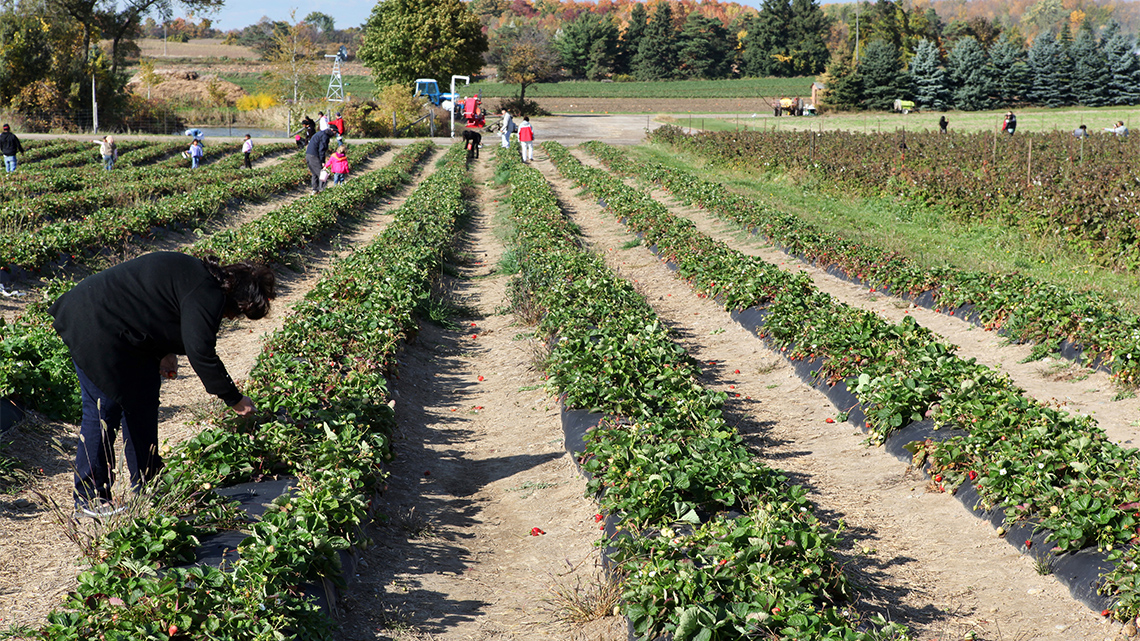Minds On
Comparing plants
Explore the following two images and descriptions of plants. While you explore the images, consider the following questions:
What do you notice about these plants? What are similarities, or things that are the same? What are differences, or things that are different?
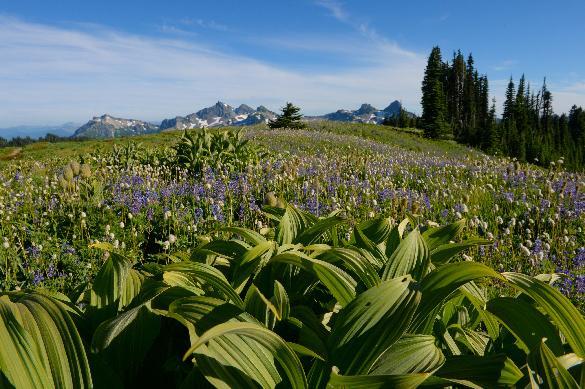

Investigate
Investigate
Now that we’ve explored the previous images of plants, let’s compare them.
- What do you notice about these plants?
- What are similarities, or things that are the same?
- What are differences, or things that are different?
Complete the Comparing Plants table in your notebook or using the following fillable and printable document. If you would like, you can use speech-to-text or audio recording tools to record your thoughts.
| Similarities | Differences |
|---|---|
Press the ‘Activity’ button to access Comparing Plants.
Press ‘Let’s Check!’ to access a possible answer you might have noticed.
You may have noticed that one of the images has plants that are growing in the wild, and the other has plants being taken care of by a human.
These are called wild and cultivated plants.
Let’s learn more!
Action
Wild and cultivated
Wild plants live on their own in nature without humans taking care of them.
Cultivated plants are taken care of by humans, such as in a garden or in a farm.
Explore the following flashcards, and try to identify the plant as wild or cultivated.
Press the flip button to access both sides of the cards. Use the arrow keys to navigate between cards.
There are positives and negatives to harvesting plants.
Harvesting means to gather plants to eat.
Check out the following lists to compare the positives and negatives of harvesting cultivated plants and wild plants.
Harvesting cultivated plants
| Positives | Negatives |
|---|---|
| Crops are able to be grown and harvested faster. | It is more expensive than wild harvesting. |
| Plants are easy to control and produce. | Cultivated plants are often grown with chemicals that can damage the earth. |
Harvesting wild plants
| Positives | Negatives |
|---|---|
| Wild plants and their habitats are protected. | If the harvesting is not careful, it could damage a plant population. |
| No chemicals are used. | People might not have as much information or knowledge about how to harvest wild plants. |
Wild crops
There are also wild crops that are grown for food all over the world!
Let’s meet Marissa, who is from Curve Lake, Ontario. She’s a member of the Ojibwe nation. She goes out in a canoe to harvest wild rice, a traditional food for her people.
Check out the following video entitled “Marissa” to learn more about harvesting wild crops.
Let’s reflect on how Marissa harvests the wild rice. Put the steps in each answer box in the correct order.
Cultivated food crops
There are many different cultivated plants that are grown for food all over the world!
Explore the following images of plants and where they are grown.
It is important to note that many of these plants and crops grow in various areas around the world, depending on the season. These are only a few examples of places each plant grows.
Press the following tabs to explore various crops and plants.
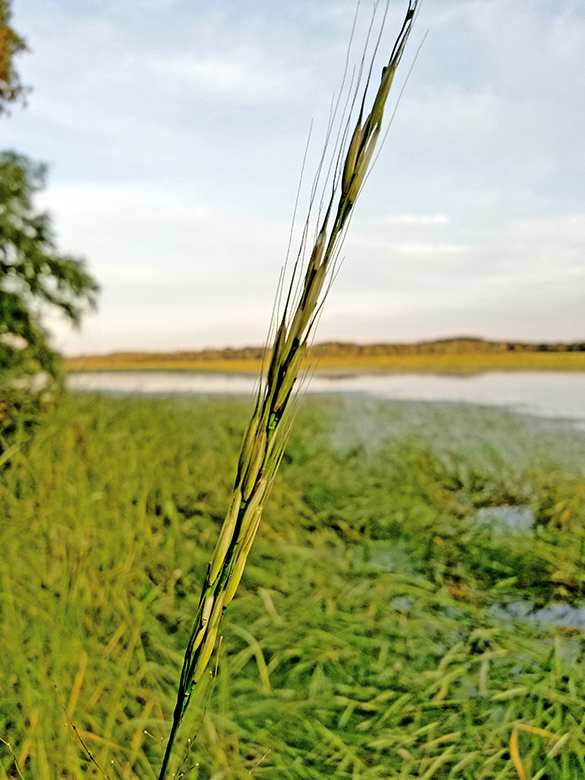
Wild rice is found in freshwater streams and lakes in Canada, the United States, and China. Wild rice only grows in fresh water that is not very deep. It can be found around the edges of lakes and rivers. Most of the plant is underwater!
Wild rice is a grain and has to be cooked to be eaten by humans.
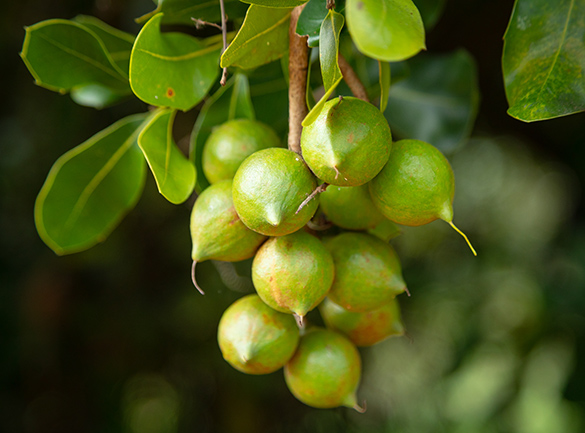
Macadamia nuts are originally from Australia. They are now grown in Hawaii in the United States, and in South Africa. They are grown in bunches on macadamia trees. Macadamia trees can only be grown in areas that do not have very cold weather. The trees need lots of rain to grow.
Macadamia nuts can be eaten raw or roasted. Sometimes macadamia nuts are chopped up and used in cookies too!
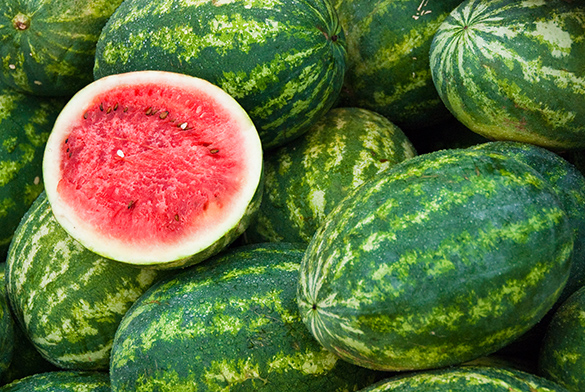
Watermelons are originally from northeastern Africa, and they are now grown all around the world. Watermelons can grow to be really big – giant ones can weigh over 100 kilograms! They can grow anywhere that has a warm summer, soil, and a source of water.
Watermelon is eaten fresh and raw. It can also be turned into juice.
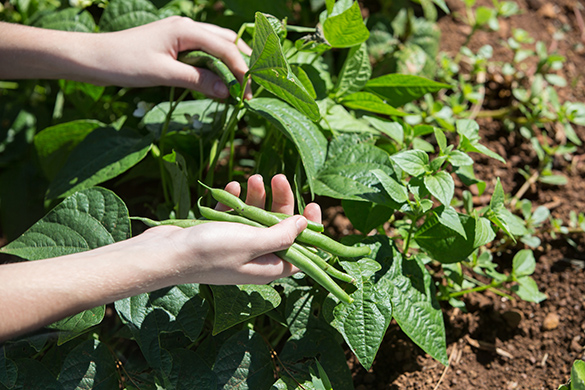
Green beans are originally from Central America and South America, and are now grown all around the world.
Green beans need warm weather, soil, sun, and enough water to grow. They do not grow if it is too hot or too cold. They can be eaten raw or cooked.
There are many ways to cook green beans. They can be boiled, steamed, fried, or eaten fresh.
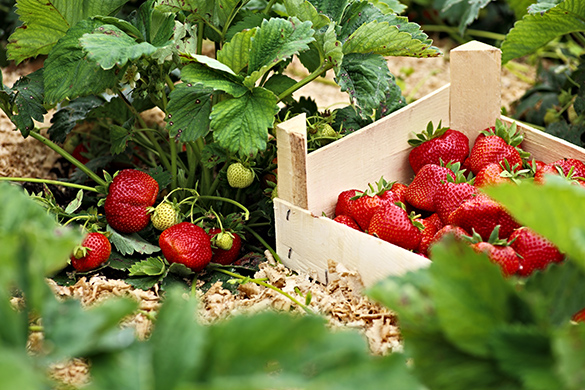
Strawberries are grown in many different parts of the world, but some varieties of strawberries are originally from North America.
Strawberries need soil, water, and lots of sunlight to grow!
They can be eaten in many ways such as raw, or cooked into other foods like desserts. They can also be crushed and cooked into sauces and jams, or frozen into popsicles and ice cream.
There are so many ways to enjoy a strawberry!
My food research
To learn even more about plant species that are grown and harvested for food, the upcoming task will focus on the “Learn” and “Record” steps from the Scientific Research Process.
By exploring new facts about certain plants grown for food, and recording what you’ve learned, you are following important steps of this scientific procedure!
Time to learn! We can learn things from different places and people.

It’s time to record what you have learned. You can write it down, or make an audio or video recording.

1. For this activity, choose a fruit, vegetable, or crop we previously explored in this learning activity.
You may choose one of the following:
- wild rice
- watermelon
- macadamia nuts
- strawberries
- green beans
2. Consider the following questions about your chosen fruit, vegetable, or crop:
- Where does your food come from? Where in the world is it grown?
- Why does it grow in this area? (For example, does it need a warm or cool climate, does it need lots of sun or a specific type of soil, etc.?)
- How is your food eaten? (Is it raw, cooked, or does is it become another food product?)
Complete the My Food Research Activity in your notebook or using the following fillable and printable document. If you would like, you can use speech-to-text or audio recording tools to record your thoughts.
| My chosen food: | |
|
|
|
|
|
Press the ‘Activity’ button to access My Food Research Activity.
Once you have completed your food research, you may use the following checklist to guide your response.
Did I…?
United Nations and zero hunger
Sustainability means that humans are trying to make sure there are enough resources, like water, soil, trees, etc., in the environment to last for a very long time.
When plants that are grown for food are affected by climate change, this also affects the amount of available food, which can lead to a global hunger crisis!
Connecting to the world
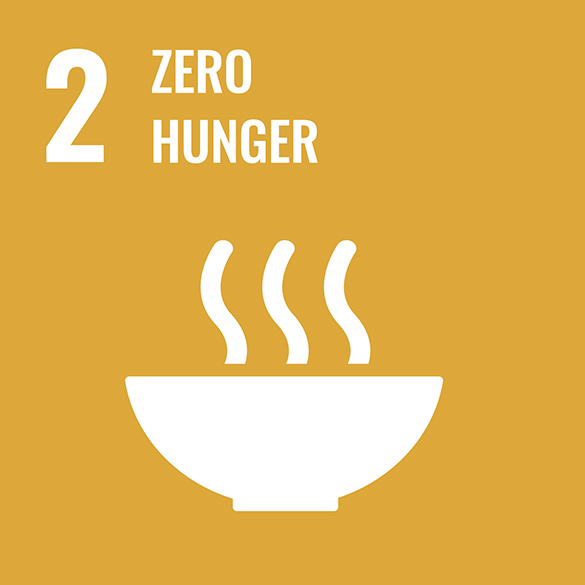
The United Nations (UN) is a group of many countries from around the world that have come together to create a better future for people and the environment. They have created 17 goals called the Sustainable Development Goals.
This learning activity is connected to Goal #2 which is called Zero Hunger. This means that everyone should have access to safe and nutritious food. Nutritious food helps someone grow and gives them energy.
Using plants for food is one way that people all over the world can help each other access safe and nutritious food.
As part of this goal, we must ensure that communities have sustainable systems for growing food.
Sustainable farming
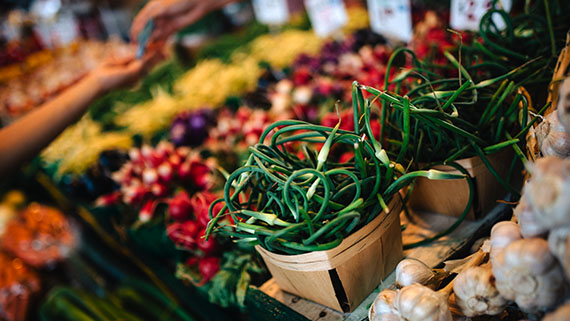
Many attempts are being made by farmers around the world to respond to this crisis of global hunger.
Right within Ontario, there are farming and harvesting practices that support food-producing plants in new and more sustainable ways.
Press the following tabs to access sustainable farming in Ontario.
The Holland Marsh is a large area of organic soil that is used to grow crops in Ontario.
It provides food to local communities, and the money earned goes back to local people who work on the farms. This is important because it provides local people with jobs and food.
They grow all kinds of vegetables, including celery, cabbage, onions, kale, and lettuce.
Check out the following images of the Holland Marsh.
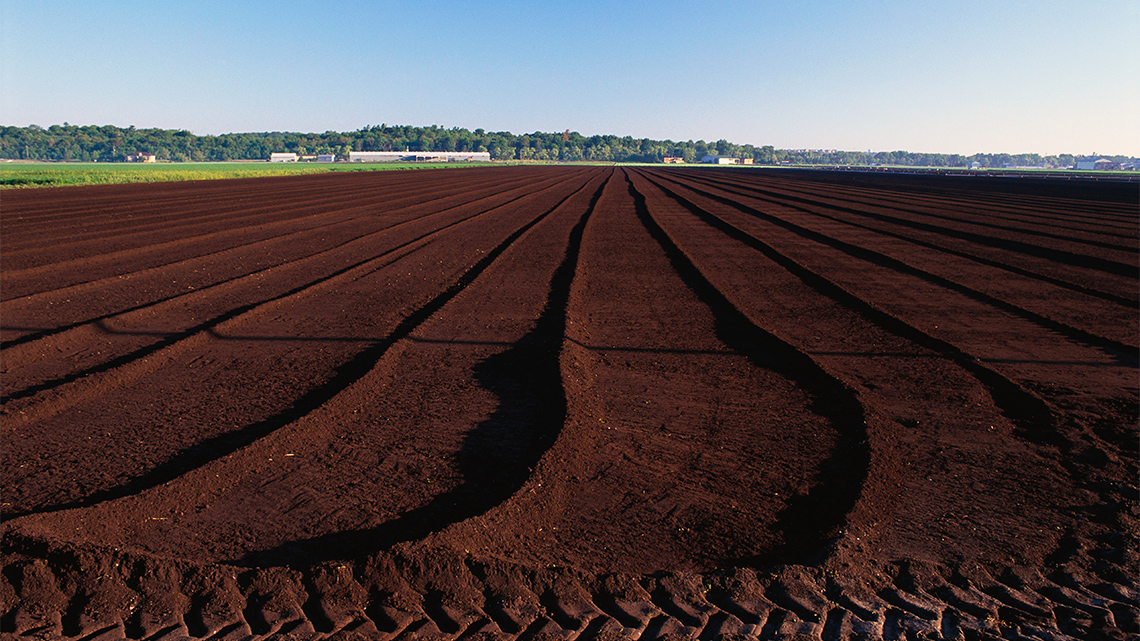
Holland Marsh ready for planting
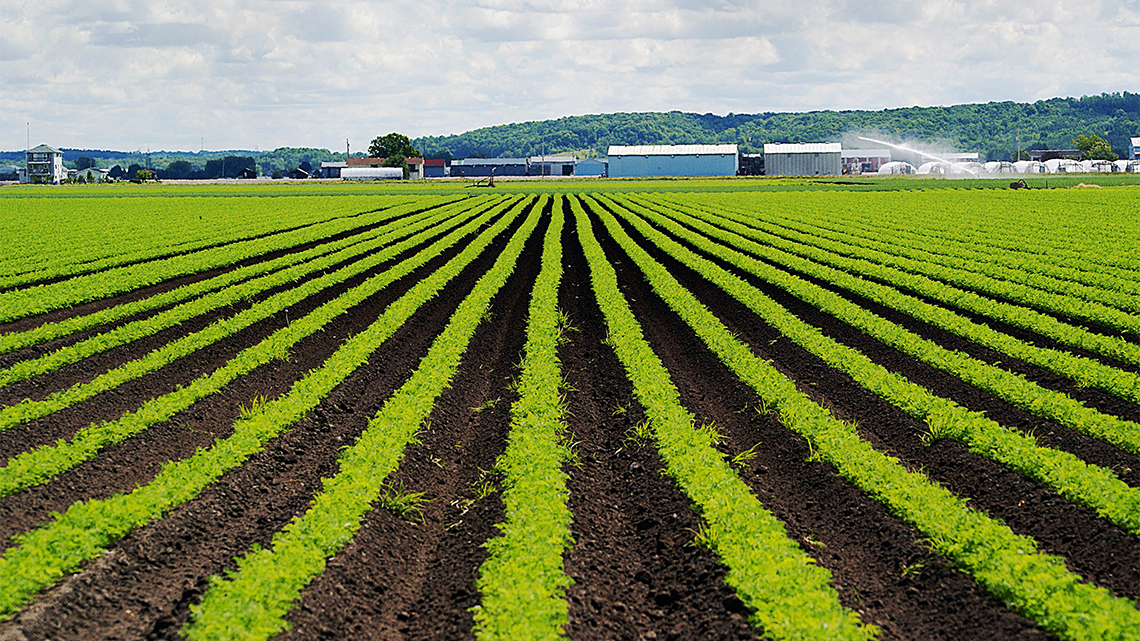
A crop of carrots

A crop of onions is drying in the field
The 100 Mile Store is located in Creemore, Ontario, and supports local small farms. Farms that are located around Creemore can sell their items in the store. Some of these items are maple syrup, honey, ginger, soup, hummus, coffee, chocolate, jam, and much more!
All of these items are produced without harmful pesticides or chemicals, and the money goes directly back into the community.
Pause and Reflect
Pause and reflect
What are some of the benefits of the Holland Marsh and the 100 Mile Store?
Record your ideas in a notebook or another method of your choice.
Press ‘Let’s Check!’ to access a possible answer.
Some of the benefits are that they are both sustainable and local.
This means that money earned goes back to the local community, and they create more jobs for people. Also, there are no harmful pesticides or chemicals used to grow the crops.
Consolidation
Learning check!
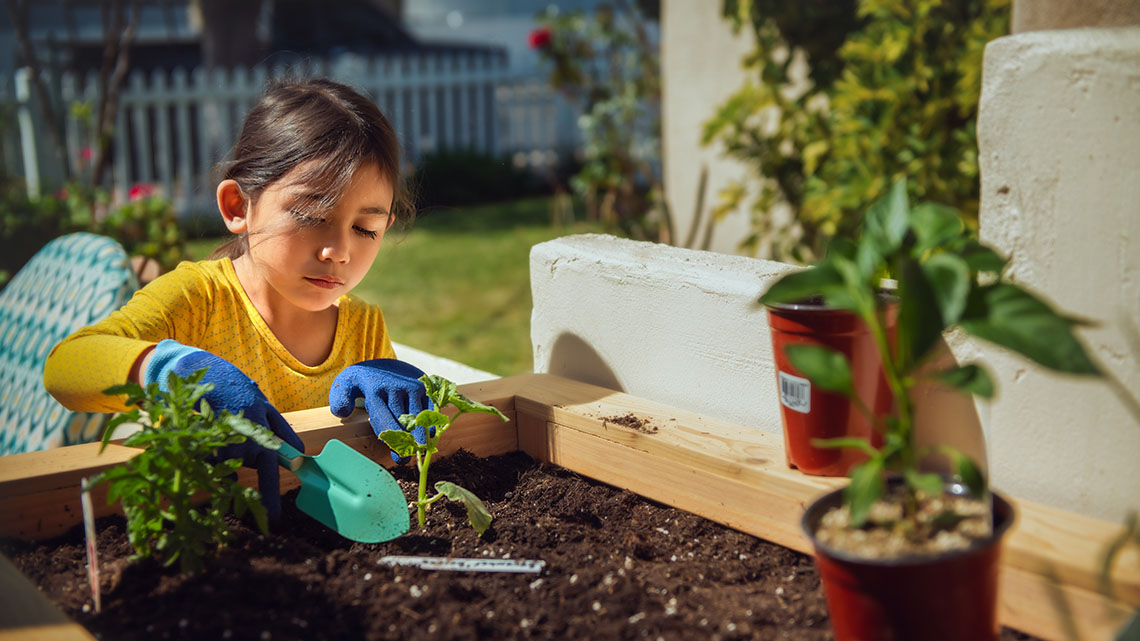
Now that we have learned more about cultivated and wild plants and crops, consider the following statements, and choose if they are True or False.
Select the correct answer, and then press ‘Check Answer’ to see how you did.
The difference
What is the difference between wild and cultivated plants?
Reflect on what you’ve learned throughout this learning activity.
Record your response in a notebook or another method of your choice.
Reflection
How do you feel about what you have learned in this activity? Which of the next four sentences best matches how you are feeling about your learning? Press the button that is beside this sentence.
I feel…
Now, record your ideas about your feelings using a voice recorder, speech-to-text, or writing tool.
